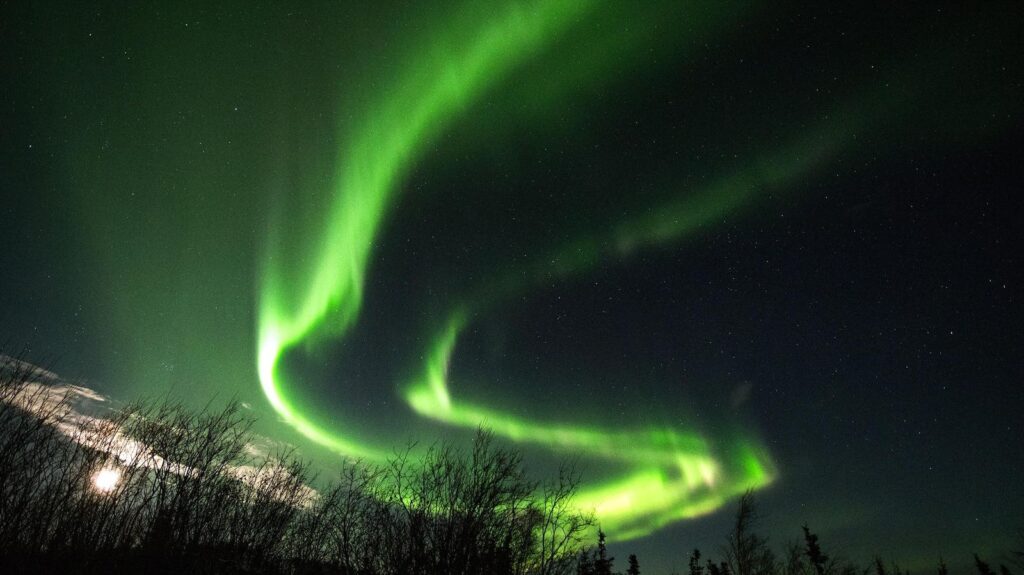Topline
Meteorologists expect the aurora borealis to be visible tonight from parts of the northern U.S. and Canada, so those looking to watch should hope for clear dark skies.
The Aurora Borealis appears in the sky on January 8, 2017 near Ester Dome mountain about 10 miles … [+]
Getty ImagesKey Facts
The Geophysical Institute at the University of Alaska Fairbanks predicts “highly active auroral displays” over much of Canada and Alaska, stretching southward across the upper Midwest, northern Great Plains and northern New England, though places as far south as Virginia, Kentucky and Missouri may have the chance to see the phenomenon on the horizon.
Cloud cover is expected across most Midwestern cities overnight, though, meaning cities like Minneapolis and Milwaukee will likely miss out on the show, but cities farther west like Boise, Idaho, and Cheyenne, Wyoming, may have better luck.
The National Weather Service also predicts clearer skies in South Dakota, most of Montana, western Minnesota, eastern Montana, eastern parts of Michigan’s Lower Peninsula and parts of North Dakota.
The U.S. Space Weather Prediction Center is somewhat less bullish, but does predict a strong aurora borealis in much of Alaska and Canada as well as a possible, but likely less intense, aurora borealis over Montana, North Dakota, Minnesota, Wisconsin and Michigan’s Upper Peninsula on Saturday night, as well as the far northern parts of the Pacific Northwest.
To see the aurora borealis, the sky needs to be clear and dark, according to the Geophysical Institute, and Saturday night’s viewing will also be aided by only having a sliver of a waning crescent moon.
Key Background
Aurora borealis, or the northern lights, is a natural phenomenon that occurs when electrically charged particles from the Sun enter the planet’s atmosphere and collide with gas molecules around the North Pole, creating an awe-inspiring display of green, red, blue, pink and purple colors in the sky, according to the Geophysical Institute.
Tangent
Scientists are able to predict whether an aurora borealis will be present by examining solar winds, according to the Geophysical Institute. If the solar winds are calm, any aurora borealis displays are likely to be minimal, but if the solar winds are strong and perturbed, it is much more likely that a strong aurora borealis will be present. Scientists are able to use a number of satellites and spacecraft to monitor these solar winds.
Contra
The Geophysical Institute notes that while scientists are able to make predictions about the aurora borealis using these solar wind methods, it warns that aurora borealis predictions are less reliable than typical weather forecasts, such as precipitation or temperature.
What To Watch For
If cloud cover or other factors obscures the northern lights, those interested in seeing it may have other chances soon. September through April typically has the most chances to see, according to the Geophysical Institute.
Further Reading
Tonight’s Northern Lights Forecast: How—And Where—To Watch (Forbes)
